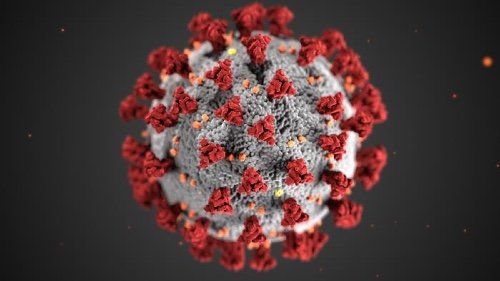How COVID-19 Has Altered Breast Imaging
Insights from industry experts on ways their departments have changed during the pandemic.

When COVID-19 hit the United States, nearly all non-emergent imaging stopped, including most breast imaging services. In the month since cases of viral infection began to spread, that means practices and departments have had to navigate new workflows, patient management, and procedures to keep providers, staff, and patients safe.
Depending on size, location, and resource level, it can be tricky for some facilities to know the best ways to move forward during the pandemic. In an effort to help, six industry experts from throughout the nation published an article in the April 1 Journal of Breast Imaging, offering guidance on how to handle practice during this time.
“While COVID-19 is not known to have any effect on the breast or the risk of breast cancer, responsible leadership requires protection of our patients, staff, and radiologists in reducing potential exposure and disease, as well as the effective use of breast imaging staff and radiologists,” wrote Jennifer Harvey, M.D., chair of imaging services at the University of Rochester Medical Center.
And, across the board, this has meant changes in breast imaging services. Collectively, the experts offered insights on three main ways their facilities have had to pivot in recent weeks.
Reduced Services
At every institution included in the article – as well as most breast imaging facilities nationwide – routine mammography and ultrasound screening have been halted. These services will remain suspended for the foreseeable future, but some practices are already rescheduling exams for dates after any shelter-at-home orders are lifted. Alternatively, other practices are opting to wait for a more definite timeline before suggested any rescheduling.
Juggling the postponed appointments will take some coordination, the experts indicate. Some are categorizing patients, identifying those who will need to be seen first. To meet the need, several offices expect to expand work hours to evenings and weekends to cycle through the workload as quickly as possible.
Still, despite the threat of COVID-19 infection, there are still some patients who need breast imaging services more immediately. The experts didn’t report a standard definition for which patients qualify as urgent cases, meaning that determination is being made largely on an institution-by-institution basis.
For example, radiologists at New York Univesrity (NYU) Langone Health have stopped all breast surgeries, but they are referring patients with breast cancer to oral therapy or other treatments until surgeries can again be safely performed. But, providers are still performing percutaneous ultrasound, tomosynthesis, MRI-guided biopsies, and non-wire localizations in some instances. Additionally, said Linda Moy, M.D., NYU professor of radiology, the institution’s radiologists are also prioritizing reviews of outside films to expedite biopsies or pre-surgical cancer evaluations.
In addition, radiologists at Emory University Health System, are continuing to see patients with confirmed breast cancer cases. And, patients with BI-RADS 3 and 4A findings have been re-scheduled at Rochester and the University of Texas MD Anderson Cancer Center.
Triaging patients during this time, though, is difficult, said Mary Newell, M.D. professor of radiology and imaging sciences and associate director of breast imaging at Emory.
“The new and disconcerting risk versus benefit conundrum for all of us comes when assessing those patients below the urgent category,” she said. “At Emory, we are trying to be clear-eyed in assessing, on a patient-by-patient basis, whether we feel the need for evaluation outweighs the risk of community exposure and possible infection.”
Staffing Changes
Alongside the reduced patient volume, practices are seeing an accompanying reduced need for staff and radiologists.
During these weeks, some staff members have taken on voluntary positions in other areas if they have the training to do so. For example, some are reading chest CT scans. Among academic medicine providers, many experts reported, some are spending time on continuing medical education or making headway on personal research efforts.
Greater Attention to Disinfecting
Just as hospitals and emergency room staff have instituted new protocols for improved infection control, so have breast imaging centers.
Every department or practice reported implementing additional protection measures for radiologists and staff alike. Wearing masks is common among staff, and many patients who do come in for appointments wear them also.
To augment social distancing, many departments have removed chairs from their waiting rooms to spread patients out, and intervals between appointments have been stretched to 30 minutes instead of 15 minutes. Other departments have also limited the number of days they see patients.
In addition, departments screen patients for COVID-19 infection with questionnaires prior to letting them see imaging staff. In fact, NYU screens twice – once with a nurse in the lobby and a second time at the department front desk. Some departments reported taking patients’ temperatures as an extra layer of protection.
Not all precaution measures involve in-office protocols. Case Western Reserve University School of Medicine, Rochester, and MD Anderson are implementing some teleradiology or phone consultations to limit interactions between radiologists, staff, and patients. MD Anderson has also instituted a rotating work schedule where providers see patients for a requisite number of days and, then, stay home for an equal number for non-clinic work.
Contrast-Enhanced Mammography Study Reveals 24 Percent Lower Sensitivity with Moderate/Marked BPE
April 30th 2025In comparison to minimal or mild background parenchymal enhancement on contrast-enhanced mammography (CEM), researchers found that moderate or marked BPE was associated with a 12 percent lower AUC for breast cancer detection.










